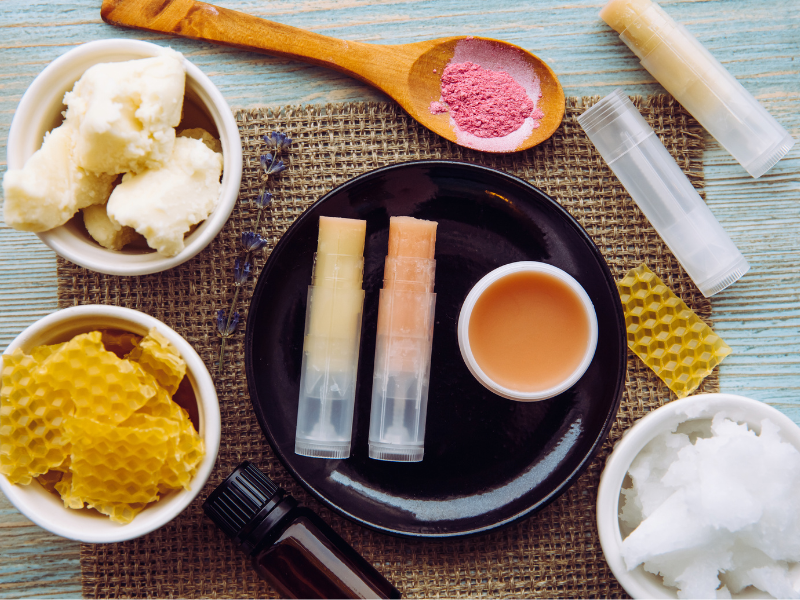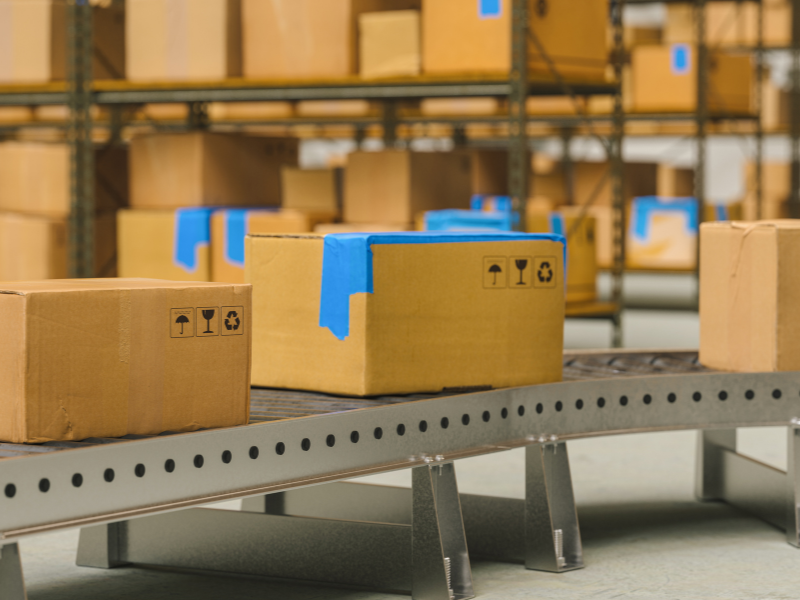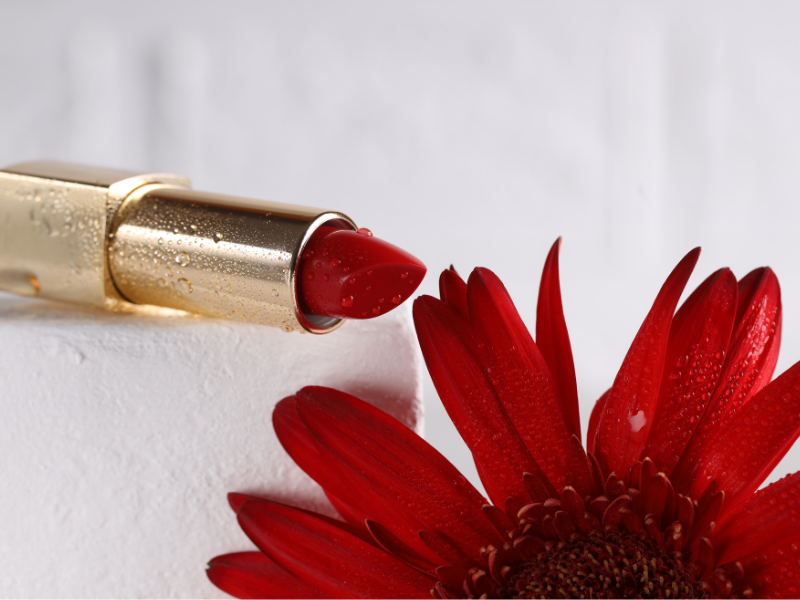How Are Lipsticks Made? A Detail from Formula to Your Favorite Shade Lipstick is the main element in the beauty world. From classic reds and trendy nudes to quirky blues and bold purples, it provides long-lasting color and helps to moisturize and protect the delicate skin of the lips. Society and culture always influence beauty, regardless of the era. If you’re curious about the lipstick-making process—from initial formulation to the glimmering tube in your purse—this blog is for you. Let’s look behind the scenes at how lipsticks are made
The History of Lipstick-Making: A Quick Nod to the Past
Before telling you about the modern process, let me tell you that lipsticks are not a new invention. Ancient people crushed gemstones to apply to their lips. Cleopatra famously wore lip color made from crushed ants and carmine beetles. Today’s method is an improved one. But the art of applying lipstick is history.
The Main Ingredients in Lipstick
At its essence, lipstick is a mix of waxes, oils, pigments, and sometimes added extras like fragrance or flavor. Let’s explain each component:
• Waxes: The backbone of lipstick structure. Common waxes used include beeswax, candelilla wax, and carnauba wax. These provide shape and the right texture for smooth application.
• Oils & Fats: They add moisture and slip, making lipstick glide easily. People widely use castor oil, cocoa butter, lanolin, and jojoba oil for their nourishing properties.
• Pigments: These provide the color, whether it’s subtle nude or bold violet. Both organic and inorganic pigments are used, and people traditionally use carmine for deep reds.

Step 1: Melting and Mixing the Base
The first step in making lipstick is preparing the base, a perfect blend of waxes and oils.
1. Weighing Ingredients: Manufacturers begin by weighing out quantities of waxes and emollients based on their formula.
2. Melting: The waxes go into a large, temperature-controlled vat, where they’re slowly made. The goal is to achieve a uniform liquid blend without burning or vaporizing the sensitive ingredients.
3. Mixing Oils: Once the waxes are melted, oils and fats are added. The mixture must be stirred constantly so it doesn’t separate or form lumps.
Step 2: Introducing Pigments—The Colour Magic
Colour is what gives lipstick its personality. Pigments are in making after the base mixture is ready.
1. Grinding the Pigment: Achieving vibrant color begins with grinding pigments into a fine powder. This step is essential for a good finish.
2. Dispersing Pigment: The fine pigment is a mix with part of the liquid base, often in a process called “milling.” Industrial mixing machines mix the paste repeatedly, sometimes for hours, to break down clumps and create even color distribution.
3. Blending: Once the color paste is smooth and glossy, it mixes back into the main batch. The whole mixture is stir until perfectly uniform.
Step 3: Refinement—Fine-tuning Consistency and Finish
Texture can make or break a lipstick. Is it matte or glossy? Soft or long-wearing? At this stage, chemists adjust the formula:
• Adjusting Viscosity: More wax or hardeners create a good lipstick, while extra emollients make it creamier.
• Additives: If the lipstick requires fragrance, shimmering particles, or preservatives, someone gently adds them to the warm mix and stirs until fully blended.
Step 4: Moulding—Shaping the Iconic Bullet
With the formula perfected, it’s time to give lipstick its shape.
1. Pouring: While still warm and liquid, someone pours the lipstick mixture into metal molds shaped like the classic lipstick bullet.
2. Cooling: The molds are cool down rapidly, usually in special refrigeration units, so the lipstick sets and hardens.
3. Release: Once solid, the molds open. Air pressure or mechanical pushers gently eject the lipsticks, now solid bullets.
This example identifies “Air pressure or mechanical pushers” as the agents ejecting the lipsticks.
Step 5: Insertion, Labelling, and Packaging
Now for the finishing touches:
1. Tube Insertion: A worker carefully inserts each lipstick bullet into its twist-up tube and securely fastens it.
2. Quality Control: Inspectors inspect lipsticks for consistency, smoothness, and correct placement in the container, and even swatch some to ensure impeccable color payoff!
3. Labelling and Boxing: They label, batch code, and box the tubes, ready for shipment to beauty stores worldwide.

Quality Control: Ensuring Every Lipstick is Flawless
Before a lipstick ever reaches your makeup bag, it passes proper testing:
• Texture: Should apply smoothly, feel pleasant, and be long-lasting.
• Color Consistency: Each batch must match exactly.
• Safety: No harmful bacteria, allergens, or unstable compounds.
• Stability Testing: Manufacturers subject lipsticks to heat, cold, and humidity to ensure they don’t melt, sweat, or break in normal conditions.
Modern Innovations in Lipstick Formulation
The lipsticks today are not just about color; they are about self-care. The beauty industry is always innovating:
• Vegan and Cruelty-Free: Many brands now use plant-based waxes and synthetic pigments to cater to vegan and ethical shoppers.
• Hydrating Formulas: Ingredients like hyaluronic acid, shea butter, and natural oils keep lips soft.
• Longwear Technologies: Furthermore, silicones and polymers help lipsticks last without smudging, even when eating or drinking.
• Multi-functional Lipsticks: Some double as blush, contain SPF, or offer plumping benefits.
Sustainability: The Next Big Trend
Eco-friendly thinking is changing how lipsticks are made. Brands and buyers are choosing better options like refillable tubes and safer, cleaner ingredients. Many companies are using sourced materials; therefore, they are also implementing [specific actions/strategies] to ensure quality and ethical sourcing. To make sure a product is truly eco-friendly, look for labels like Leaping Bunny, Vegan Society, or other green certifications.
Conclusion: The Art and Science of Lipstick
Next time you swipe on lipstick, you’ll know the incredible journey it’s taken—from raw ingredients and scientific to artful color creation and iconic packaging. Lipstick is more than makeup. It is about creativity and care, too.

So, the next time someone asks, “How is lipstick made?”, you can share the secrets behind every form of color—because beauty, as we’ve learned, starts from the source and ends with a smile!
If you’re a lipstick lover, let us know your favorite shade below and share this behind-the-scenes journey with fellow beauty fans!
